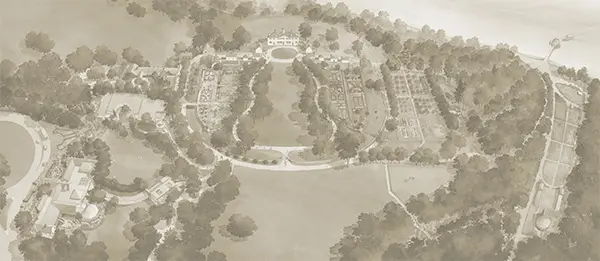Apples are ideally planted in multiples of different varieties for optimal fruit production, and many also benefit from pollinators to increase the effectiveness of cross-pollination. Most apple trees are grown from scionwood grafted to rootstock, and the kind of rootstock will determine the ultimate height and disease resistance of the tree. Dwarf and some semi-dwarf trees, with their smaller root systems, must be staked or trained to a wall or fence, much like the espaliered trees at Mount Vernon. The health and fruit yields of most trees depends on proper pruning and treatment of pests and disease.
Latin Name
Malus pumila
Family
Rosaceae
Type of Plant
Bloom Season
April
Seasons
Specifications
Uses
Sunlight Exposure
Colors
Native Range
Europe, Asia
History
Apples were an important crop during the colonial period due to the popularity (and necessity) of cider production. Washington grew several varieties for this purpose in the Orchard at his Mansion Farm, as well as on his outlying farms. He records "Received 215 Apple trees (red striek) from Major Jenifer; wh[ic]h I sent to the river plantation in the Neck, to be planted" in his diary on November 12, 1785.
Other Details
Planted at Mount Vernon




Hardiness Zones












Average annual extreme minimum temperature 1976-2005











Bartlett Tree Expert Company has been working with Mount Vernon Estate since 2011 providing expert arboricultural care and GPS mapping for the estate’s historic trees, as well as support from their research facility. Mount Vernon is proud to partner with Bartlett Tree Experts and appreciates their sponsorship of George Washington’s Mount Vernon Plant Finder App.
Bring Washington's Garden Home
Purchase our historic seeds, collected from plants grown at Mount Vernon and plant them in your own garden.
Shop Now


